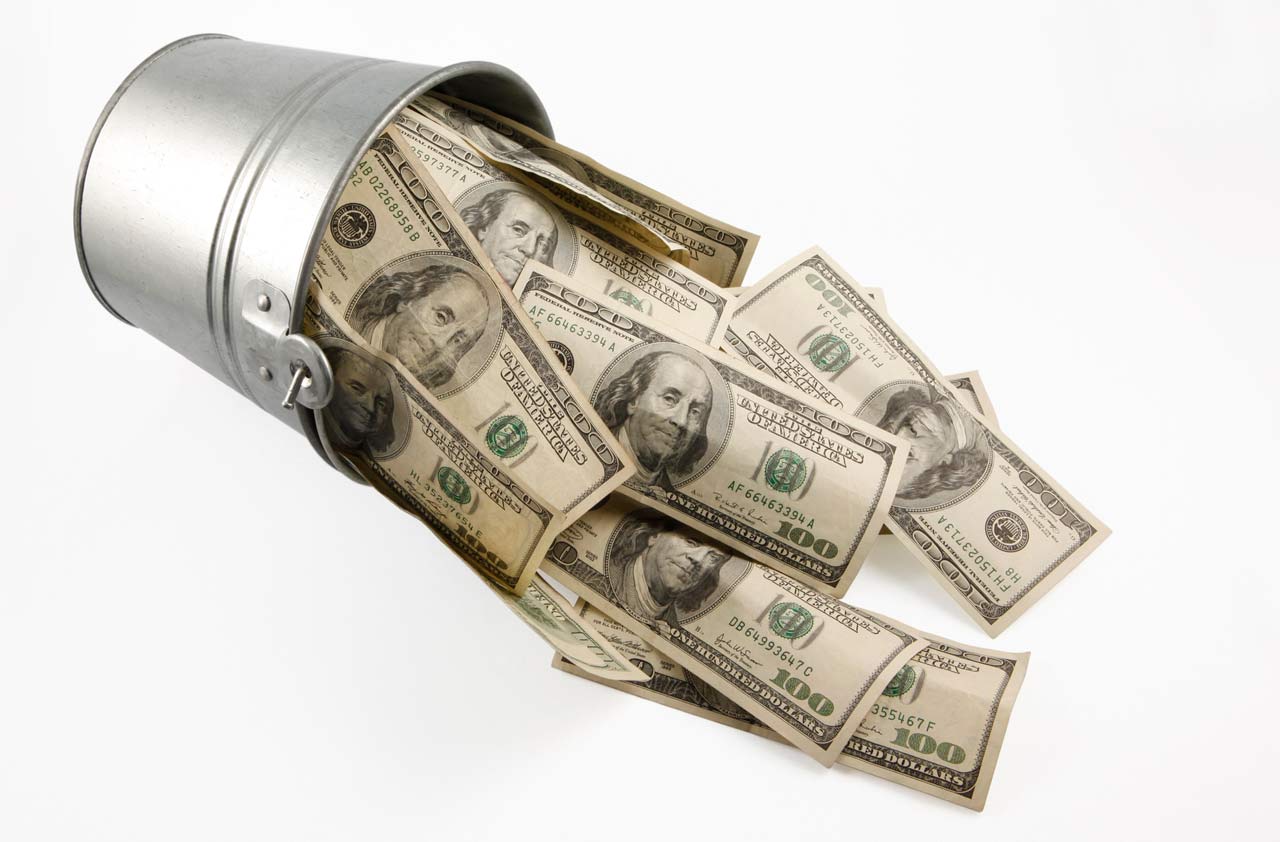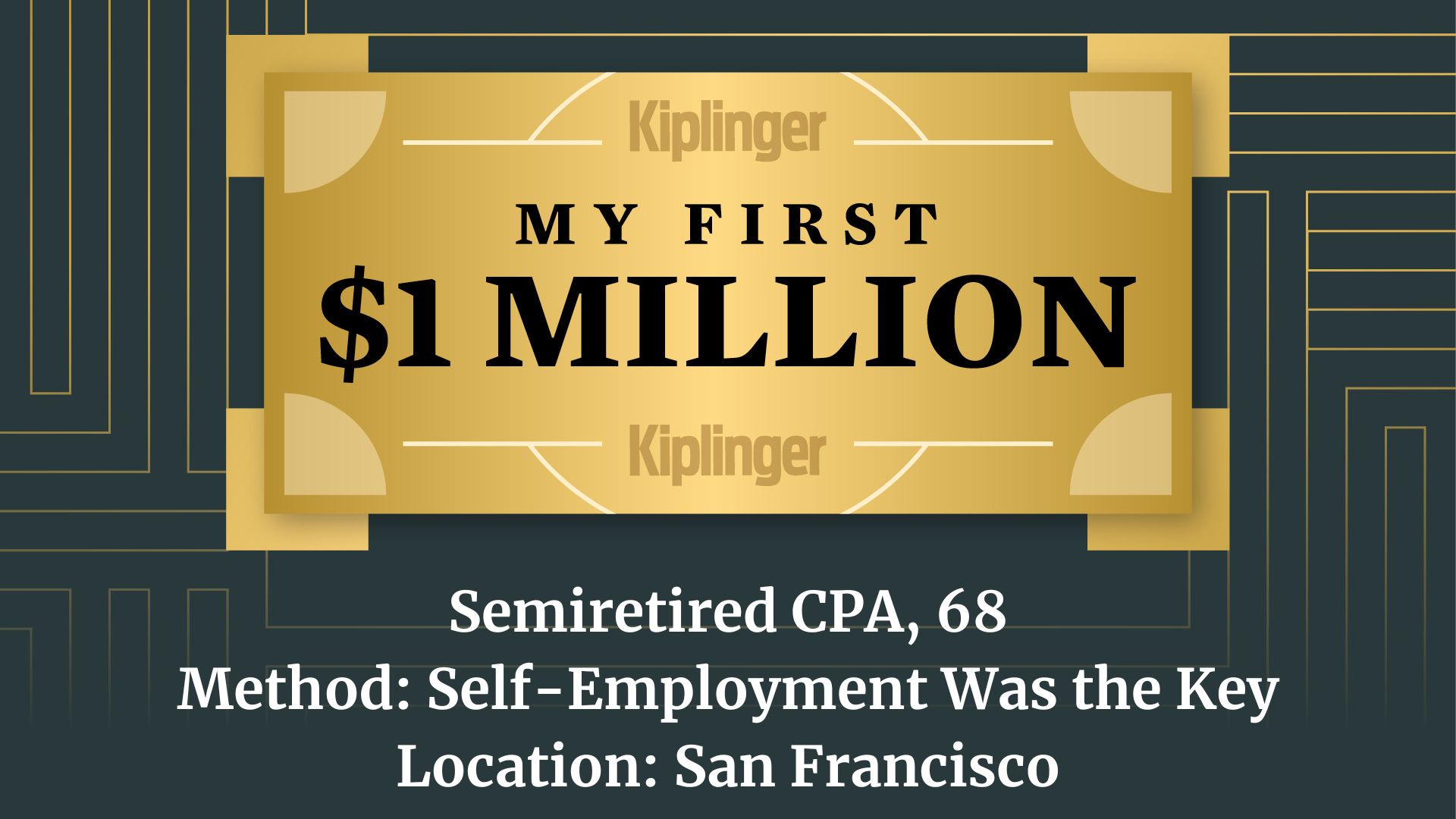The Bucket Approach for Investing in Your 50s
Pouring your savings into three different buckets is a handy way to get ready for retirement. Here's what goes into each of your buckets.


Planning for retirement is not as simple as it was for your parents. Retirement income used to be a three-legged stool: pension, Social Security income and savings. Recently, companies have been doing away with pension plans and Social Security does not cover nearly enough of an individual's retirement income needs.
Most savers are in their peak savings ability in their 50s, and it’s important time to build your buckets efficiently. To better balance your retirement savings, you should diversify your tax positioning. This can be done by contributing to three “buckets”: taxable, IRA (pre-tax) and Roth (post-tax).
The Taxable Bucket
Any money that is in your taxable bucket reaches your account after the IRS has already taken its cut. This money is like what you’d see on your paycheck after taxes have been taken out. This is the money that goes into your checking account via direct deposit on paydays. So, clearly, this bucket has no limit on what you can add to it. There are no age restrictions for adding money to this bucket, making it the most flexible of the three. Any amount of money you invest here is called your “basis” or “cost basis.” Examples of investments for your taxable bucket include CDs, savings accounts, stocks and mutual funds.
From just $107.88 $24.99 for Kiplinger Personal Finance
Become a smarter, better informed investor. Subscribe from just $107.88 $24.99, plus get up to 4 Special Issues

Sign up for Kiplinger’s Free Newsletters
Profit and prosper with the best of expert advice on investing, taxes, retirement, personal finance and more - straight to your e-mail.
Profit and prosper with the best of expert advice - straight to your e-mail.
IRA (Pre-Tax) Bucket
The second bucket is the Individual Retirement Account, aka IRA. This money can be from a traditional IRA or from funds rolled over from other retirement accounts, such as 401(k)s from former employers. All the money in this bucket is typically contributed on a pre-tax basis, meaning you earned the money and it was invested before taxes were taken from it. Therefore, you will have to pay taxes on it upon taking any distributions.
The limitations on adding money to this bucket change annually. If you want to add money and deduct the investment from your taxable income, your income must be below a certain threshold. The bulk of this money is built from contributing to a retirement plan through your employer in the form of a 401(k), 403(b) or TSP savings plans. As you hit your 50s and approach retirement, you are allowed to add more to your retirement account, known as a “catch up” period.
Typically, people have the majority, if not all, of their retirement savings in this bucket by the time they are in their 50s. The money you take out of this bucket, come retirement, is fully taxable at ordinary income rates.
The Roth IRA Bucket
The third, final and most complex of the three is the Roth IRA bucket. A Roth IRA is a special retirement account that you fund with any earned income you have remaining post-tax. Contributions to this account cannot be deducted on your income taxes. But unlike traditional IRAs, all withdrawals from this bucket — including any investment gains — during retirement will be tax free if you follow the IRS rules.
Another option for high-income earners who aren’t allowed to contribute to a Roth IRA is a Roth 401(k). Not all employers offer Roth 401(k)s, but they are becoming increasingly popular since they do away with income phase-outs for contributions.
This bucket is the hardest to build up due to income restrictions or employer availability. There are backdoor ways for such people to contribute. The availability and income restrictions typically cause this to be the smallest of the three buckets.
Which Bucket is Best?
The best bucket will depend on your specific financial situation. The pre-tax IRA bucket tends to look the most appealing. You save on taxes when you are working during your higher income tax years and spend when you are in a lower tax bracket during retirement. Although, what if you are not in a lower tax bracket during retirement? Tax rates change all the time and it’s not a given that your bracket will be lower in the future.
The Roth and taxable buckets are good because you can take money out tax free (with a Roth) or taxed less (taxable bucket), at capital gains rates with the sale of stocks or mutual funds. This assumes that the IRS doesn’t change its rules, which it has been known to do. Life is full of unknowns, and it’s important to remember that the saving rules for retirement are fluid.
The answer is the best bucket for taking income in retirement will likely change over time. As tax rules change, and your personal situation evolves, the best bucket for distributions will change, too.
Retirement savers put much time and effort into diversifying investments within their savings, so that they are not putting all their eggs in one basket. They own a mix of stocks, bonds, mutual funds and so on. Shouldn’t these investors also consider putting their different eggs in different tax baskets (buckets) as well? Not just in the IRA/401(k)/403b savings vehicles?
Retirement planning is always changing, so it’s important to stay on top of new saving mechanisms that can make the transition the best for you and your finances. Saving for your retirement isn’t easy but with careful planning, it can be accomplished and reduce your worries and stress at a time when you should be comfortably relaxing after decades of hard work.
Securities offered through LPL Financial, Member FINRA/SIPC. Investment advice offered through SFG Wealth Management, a registered investment adviser. SFG Wealth Management and Synergy Financial Group are separate entities from LPL Financial.
The opinions voiced in this material are for general information only and are not intended to provide specific advice or recommendations for any individual. This information is not intended to be a substitute for specific individualized tax advice. We suggest that you discuss your specific tax issues with a qualified tax adviser.
The Roth IRA offers tax deferral on any earnings in the account. Withdrawals from the account may be tax free, as long as they are considered qualified. Limitations and restrictions may apply. Withdrawals prior to age 59½ or prior to the account being opened for five years, may result in a 10% IRS penalty tax. Future tax laws can change at any time and may impact the benefits of Roth IRAs. Their tax treatment may change.
Profit and prosper with the best of Kiplinger's advice on investing, taxes, retirement, personal finance and much more. Delivered daily. Enter your email in the box and click Sign Me Up.

Joseph C. Conroy is a CERTIFIED FINANCIAL PLANNER™ professional who is passionate about helping his clients pursue their goals. He founded Harford Retirement Planners to provide objective advice and knowledge to his clients. By partnering with an independent broker dealer, it allows Joe to sit on the same side of the table as his clients. It is this experience, working with many individuals over the years from many backgrounds, which inspired Joe to write the book "Decades & Decisions."
-
 10 Cheapest Places to Live in Washington
10 Cheapest Places to Live in WashingtonProperty Tax Is Washington your go-to ski destination? These counties combine no income tax with the lowest property tax bills in the state.
-
 Healthy to 100: Secrets from Countries Where Retirees Age Best
Healthy to 100: Secrets from Countries Where Retirees Age BestLongevity is a team sport, according to author Ken Stern. Here's the secret sauce for living long, healthy lives from countries like Italy and Japan.
-
 My First $1 Million: Semiretired CPA, 68, San Francisco
My First $1 Million: Semiretired CPA, 68, San FranciscoEver wonder how someone who's made a million dollars or more did it? Kiplinger's My First $1 Million series uncovers the answers.
-
 6 Overlooked Areas That Can Make or Break Your Retirement, From a Retirement Adviser
6 Overlooked Areas That Can Make or Break Your Retirement, From a Retirement AdviserIf you're heading into retirement with scattered and uncertain plans, distilling them into these six areas can ensure you thrive in later life.
-
 I'm a Wealth Adviser: These Are the 7 Risks Your Retirement Plan Should Address
I'm a Wealth Adviser: These Are the 7 Risks Your Retirement Plan Should AddressYour retirement needs to be able to withstand several major threats, including inflation, longevity, long-term care costs, market swings and more.
-
 High-Net-Worth Retirees: Don't Overlook These Benefits of Social Security
High-Net-Worth Retirees: Don't Overlook These Benefits of Social SecurityWealthy retirees often overlook Social Security. But timed properly, it can drive tax efficiency, keep Medicare costs in check and strengthen your legacy.
-
 Do You Have an Insurance Coverage Gap for Your Valuables? You May Be Surprised to Learn You Do
Do You Have an Insurance Coverage Gap for Your Valuables? You May Be Surprised to Learn You DoStandard homeowners insurance usually has strict limits on high-value items, so you should formally "schedule" these valuable possessions with your insurer.
-
 8 Practical Ways to Declutter Your Life in 2026: A Retirement 'Non-Resolution' Checklist
8 Practical Ways to Declutter Your Life in 2026: A Retirement 'Non-Resolution' ChecklistHere's how to stop wasting your energy on things that don't enhance your new chapter and focus on the things that do.
-
 To Retire Rich, Stop Chasing Huge Returns and Do This Instead, Courtesy of a Financial Planner
To Retire Rich, Stop Chasing Huge Returns and Do This Instead, Courtesy of a Financial PlannerSaving a large percentage of your income, minimizing taxes and keeping spending in check can offer a more realistic path to retiring rich.
-
 New Year, New Retirement Rules: Here's How You Can Keep Up as the Landscape Changes
New Year, New Retirement Rules: Here's How You Can Keep Up as the Landscape ChangesFor a successful modern retirement, prepare for a longer life, manage high health care costs and prioritize your social life and purpose.
-
 7 Creative Ways to Spend Less and Save More In Retirement, Courtesy of a Financial Pro
7 Creative Ways to Spend Less and Save More In Retirement, Courtesy of a Financial ProWorried you won't have enough money later in life? Try redesigning your vision of retirement, and you may find your savings go further than you thought.